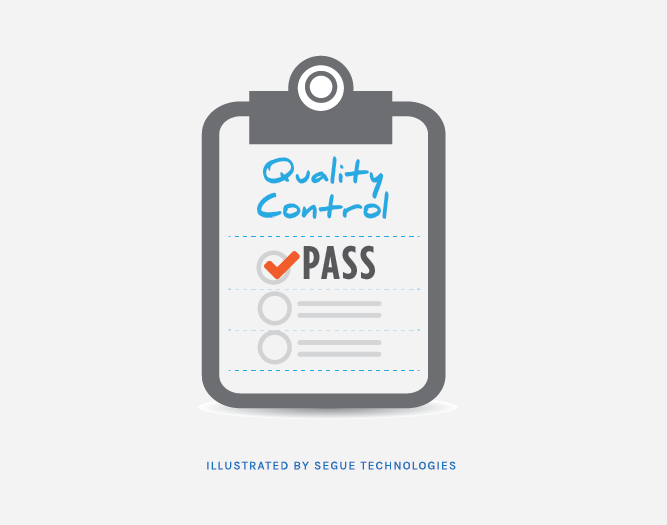When people devalue the role of testing in website development, the release of their product can be overshadowed by software issues. Spectacular website failures have cost many companies dearly, deeply embarrassed some, and completely undercut the launch of others. As the digital face your company, and in some cases the machinery of your business, it is crucial that your website work as intended for each and every user visiting your site. The importance of intensive and thorough quality control in the development of websites is clearly demonstrated in expensive failures that happen every day.

The Impact of Website Failures
Software testing is a very important part of software development. Testing ensures your product meets the end user needs and performs exceptionally well. Products that do not meet these goals can have failures that can hurt a business’ reputation. In January 2008, on one of the biggest market days in six years, the TD Ameritrade website crashed. Theirsevers went down at 10 AM- the peak of the business period- and some six million investors could not load their home pages or confirm their investments. The website failure lasted two hours, shaking the confidence of many.
On November 20, 2012, major Australian on-line retailer, ClickFrenzy scheduled a heavily advertised 24 hour sale for collective online retailers inspired by the US’ “Cyber Monday” sale. The event was announced a month in advance through print media, web ads, and in some retail stores. However, when customers tried to load the website they were greeted with a page of unformatted text and repeated attempts to re-load the page failed. Nobody knew when the page would go up again. At the same time, David Jones, another major Australian retailer attempted its own competing “Christmas Frenzy” online sale. This website also failed spectacularly. Both of these companies tried to explain these major failures as being due to unexpectedly high and unanticipated demand. However, the disaster clearly had more to do with a failure of scalability in the design of the sites and failure of website testing as part of their quality control.
In July, 2005, investor Rupert Murdoch paid $327 million to buy Myspace.com. At the time Myspace was viewed as a broad-based social networking site for younger users. At its peak it boasted some 100 million accounts. However, the website had poorly designed security and was particularly vulnerable to vandalism, phishing, malware, and spam. The developers clearly failed to create and test their spam and security features, ultimately causing Myspace to develop a reputation as a “vortex of perversion” (Gillette, 2011) The seediness of the site drove advertising away and it quickly lost market share.
Finally, one of the most egregious website failures in history was the the dysfunction surrounding the launch of the healthcare.gov website . More than 20 million people experienced the functional failure of this important government site that had been developed to help people obtain affordable health insurance online through the Affordable Care Act. The inability to load and access the features of the site, failure of login, and monumental failure of security features on the site could have cost the United States Government an important Federal program and severely damaged the political reputation of the administration.
Ben Simo, past president of the Association for Software testing found serious subpar software coding in Healthcare.gov. When he investigated the problems he found that one part of the website had created so much “cookie” tracking data that the capacity of the site to accept login information was exceeded. Although the President was claiming that the problem had to do with the popularity of the site, clearly the real problem was massive failure of quality control and testing. In light of the failure, the government launched a massive effort to fix the site and mitigate any political fallout.
How to Avoid Website Failures
Website quality control includes:
- load and stress testing the application,
- testing the functionality of all links, database connections, user data collection forms, and cookies,
- assessing its usability, the user interface, navigation, user controls, instructions, image placement and sizing,
- testing the compatibility of the website on different browsers and operating systems including Linux, Windows, and Mac OS, as well as mobiles.
- and testing its security.
Your website has to be regarded as an industrial product that must meet the end users’ needs and function as intended. Quality control is the only way to ensure you’re putting your best foot forward as a company by identifying problems with your website before it reaches the customer.